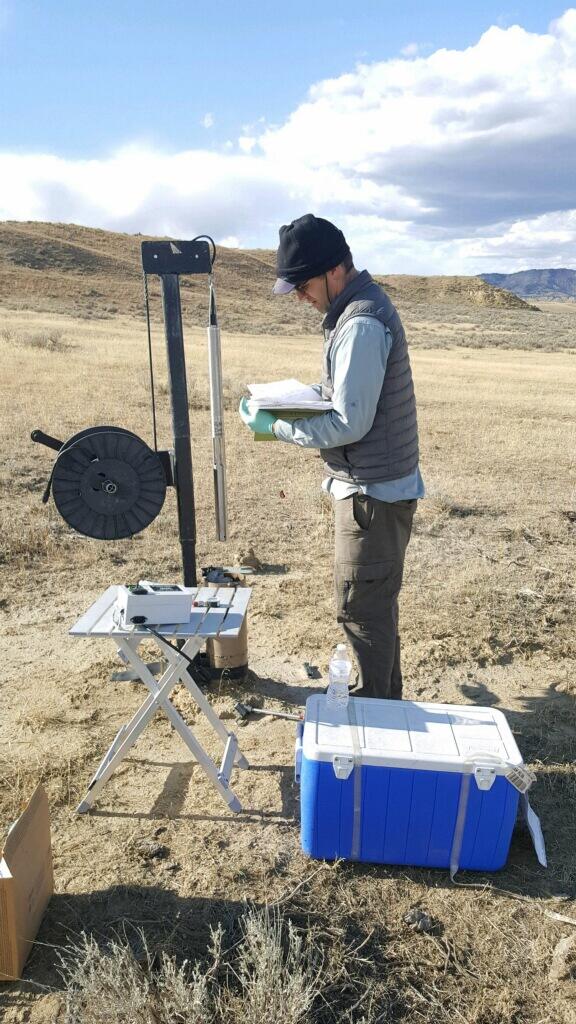New Patent Helps Coalbed Methane Research
The Subsurface Environmental Sampler Allows Scientists to Study Underground Microbes Under Native Conditions
Far underground, in a Wyoming well-bore drilled through rock and coal, exciting research is bubbling up. USGS researchers are studying how bacteria and other microbes may play a role in the formation of natural gas from coal, and they’re using one of USGS’ newest patents to do it. This patent is the subsurface environmental sampler, or SES.
“The deep subsurface is an exciting frontier for undiscovered life and ecosystems, just as alien as space or the deep ocean,” said USGS scientist Elliott Barnhart, who led the team that received the patent. “Fellow USGS researchers like Francis Chapelle helped prove that life does exist in the subsurface and the microbes do important things. Hopefully, the SES can help further understand this little-known environment.”
Barnhart and his colleagues are studying microbes that play a significant role in the production of methane gas from coal beds, a resource referred to as coalbed methane. Methane is the primary component of natural gas.
USGS scientists use the SES to capture samples of the microbes at the conditions they live in and transport them to the surface without altering those conditions. This is important, because microbes behave differently in different pressure, temperature, and chemical environments. To find out how the microbes produce methane from digesting coal, Barnhart and his fellow researchers need to mirror the microbes’ native environment as closely as possible.
The way the sampler works is first, pieces of subsurface material, such as coal, are inserted into a chamber in the SES. The sampler is then sent down the well-bore to the same depth as the coal layer being studied. Barnhart and the other USGS scientists have confirmed that the microbes will attach to coal within the sampler, so once it reaches the desired depth, the sampler is opened to allow the microbes in. Usually there is water and dissolved gas present, which are also allowed into the sampler and can also be sampled and analyzed.
Once sufficient time has passed, the sampler is closed and returned to the surface. Scientists can then identify important microbes and perform experiments to determine the rate at which they produce methane from the coal.
The subsurface environmental sampler is the result of collaboration between the USGS National Innovation Center, USGS Energy Resources Program, and the Center for Biofilm Engineering and Montana Emergent Technologies, in partnership with the Department of Energy’s Joint Genome Institute. More information can be found here. To learn more about USGS energy research, please visit the USGS Energy Resources Program’s webpage, sign-up for our newsletter, and follow us on Twitter.
For licensing of the technology behind the subsurface environmental sampler, please contact James Mitchell at gs_usgs_patents@usgs.gov.




